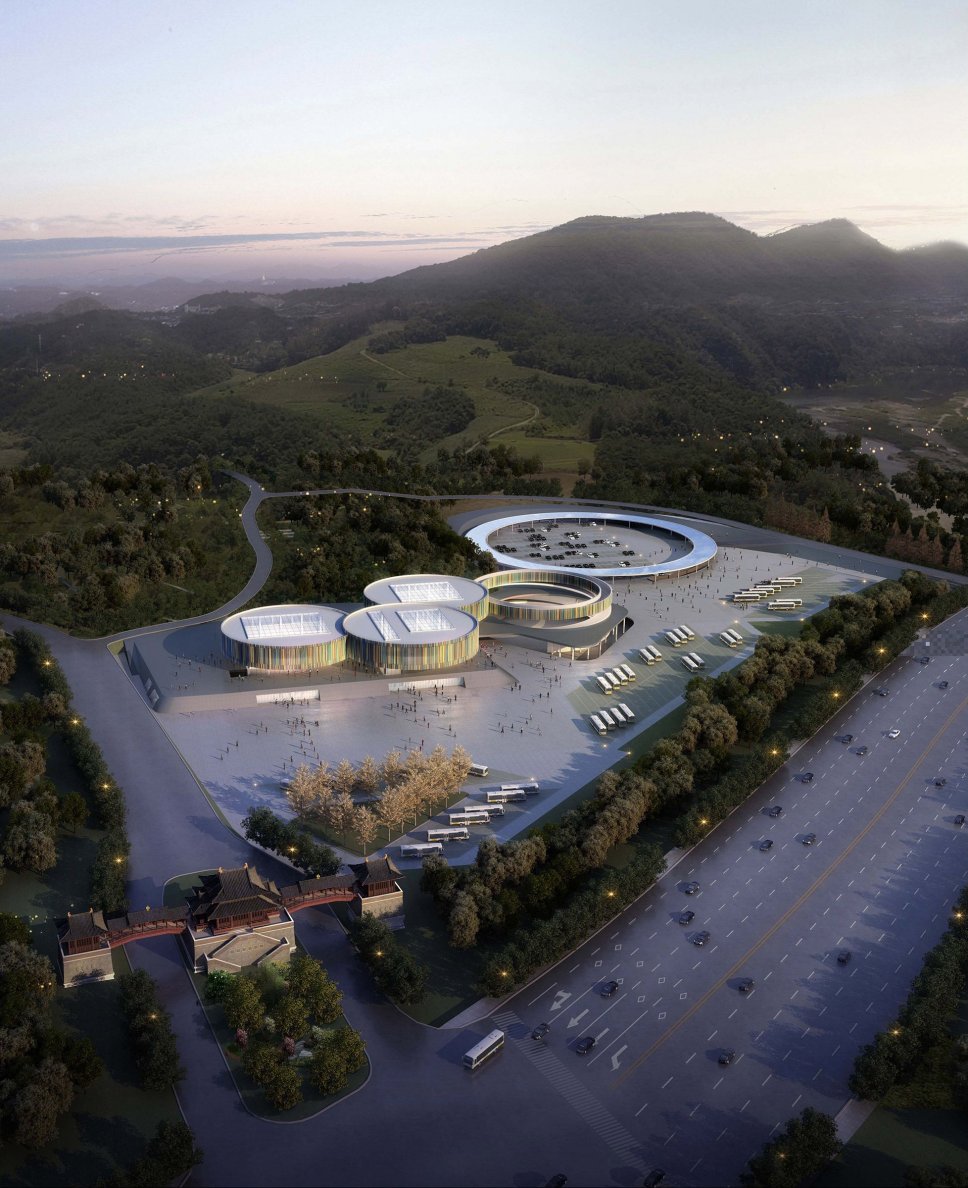Nanjing
Niushou Mountain Scenic Area
Visitor and Exhibition Center
Visitor and Exhibition Center
Sun Realty & Development
GFA app. 11,480 m²
2014-in construction
Located in the Jiangning District, Niushoushan extends along the undulating hills between the Yangtze River and the Outer Qinhuai River. Its name is derived from its appearance, and literally means “the head of an ox.”
The urban design for the future Niushou Mountain scenic park is intended to create a balanced environment; one that fosters a harmonious coexistence between the Nanjing Nanchan Temple culture and the natural environment. By achieving this, the design functions as a stand-out model that exemplifies the area’s eco-tourism industry.
In line with its long Buddhist tradition, Niushou Mountain will be developed with the aim of becoming a major Buddhist Culture site in Jiangsu Province. The park will feature a clear network of paths that facilitate orientation with the natural environment. These paths will also visibly demarcate the man-made building from the natural forest, while the Temple cultural buildings will continue to dominate the landscape. The new supporting facilities will separate themselves from existing cultural buildings through the nuances of form and language. However, they will retain certain principled elements and cultivate an implied “universal language” that is unique to this regional park.
The Niushou Mountain, as “a place between heaven and earth,” will cater to a particular form of tourism; one that is spiritual and pedagogical in its quest to respect both environment and heritage. In particular, the Exhibition and Visitors Center will function as the centrepiece in this tableaux, educating and informing the site’s visitors.
“The sky is round, the earth is square.” Paying homage to this old saying, we have created clusters of buildings that vary in size and function for this special spiritual place. This identity is founded on centuries of tradition and sacred buildings, which are transmuted into contemporary form. The cylindrical buildings, in tandem with old and reconstructed buildings, create an unequivocal unity and enable the “samsara”—the continuous flow and cycle of life.
